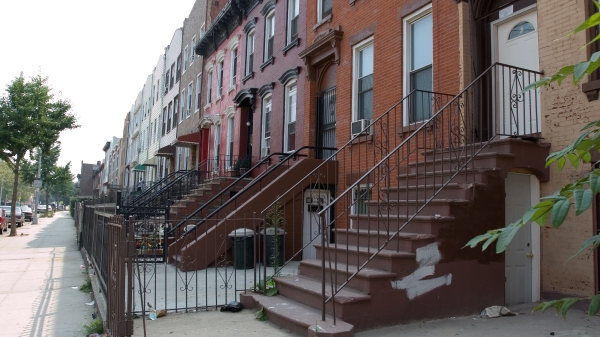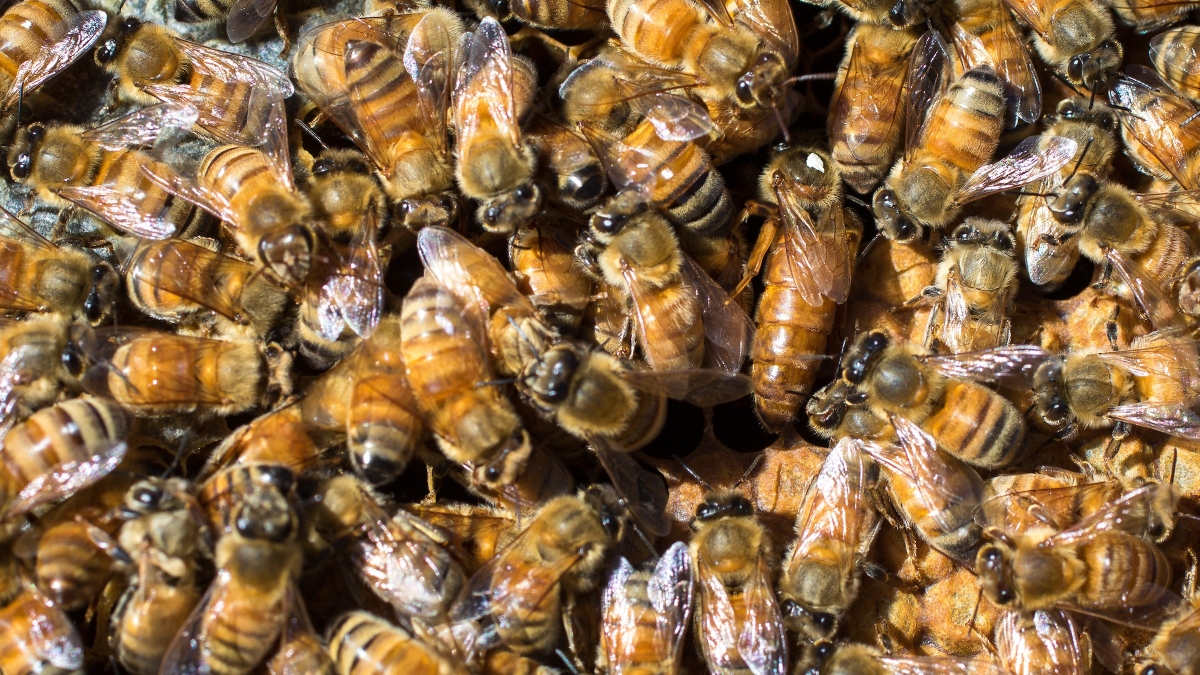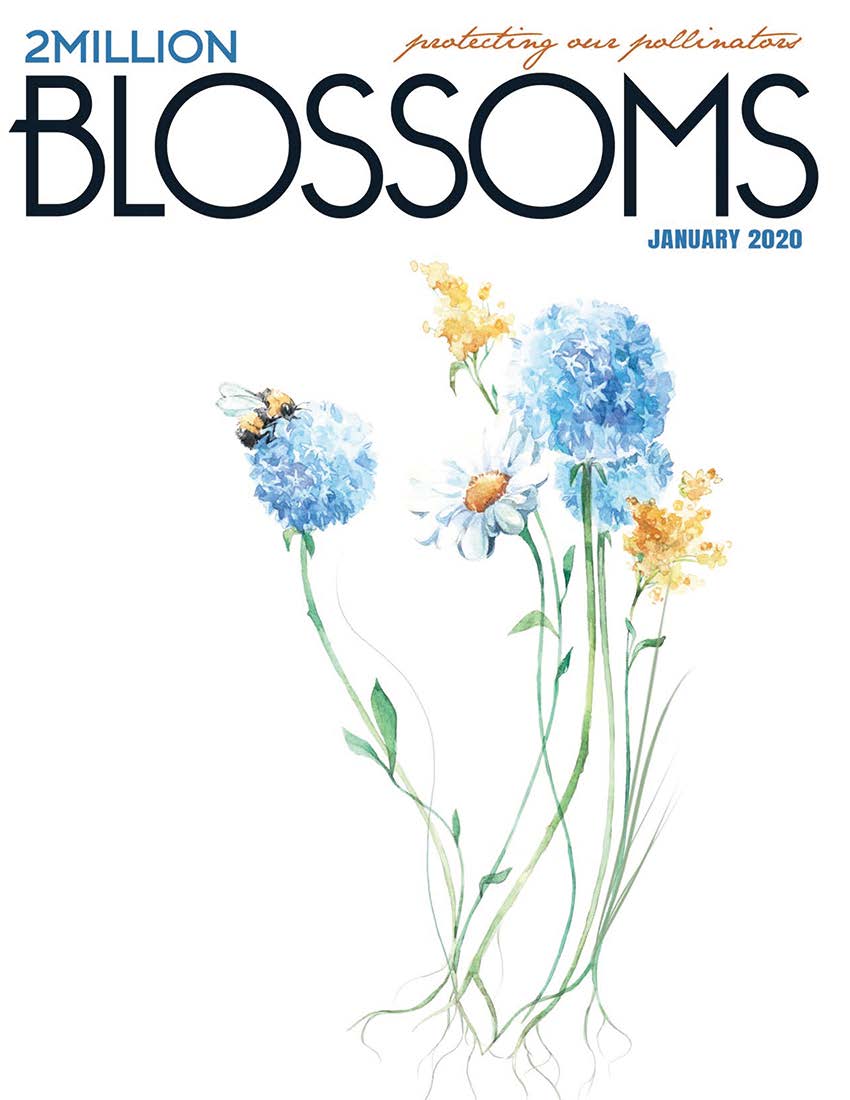Last week the United Nations biodiversity chief warned that humans risk living in an “empty world” with “catastrophic” consequences for society if world leaders cannot reach an agreement this year to stop the mass extinction of wildlife and destruction of life-supporting ecosystems.
Rhinos. Giraffes. Tigers. Birds (all of them). Insects. All of them are facing extinction. While the average person may not be able to do much about giraffes or tigers, you can help bees.
And there’s a beautiful new magazine that can help you do that. Created by an Arizona State University biologist, 2 Million Blossoms is a new quarterly launching this month. With spectacular photography, writing and design, this is the Vanity Fair of pollinator publications.
Even if you don’t keep bees but simply like them, there are features on what you can do to help them. Also included are features on interesting pollinators you may never have heard of and initiatives going on in cities and countries around the world — including everything from rooftop beekeeping to creating more pollinator-friendly urban environments. Cities don’t have much for bees to forage on, and a lot of the solitary bees fly less than 500 yards to forage. If you plant the right things on flat spots that are unused (such as the top of bus stops), they become a nice food source for bees in the spring, summer and fall.
The writing is as spectacular as the visual presentation. The inaugural issue features a story by natural history writer Craig Childs about using bees to find water in one of the West’s harshest deserts. Other stories include a humorous and thoughtful piece about the ethics of beekeeping and how to plant the best garden for pollinators.
Founder Kirsten Traynor earned her PhD from ASU in 2014 in honey bee biology. The former editor of the monthly magazine American Bee Journal and the quarterly magazine Bee World, Traynor recently returned to ASU to work as a research associate in the Global Biosocial Complexity Initiative.
“It’s aimed at both beekeepers who do a lot of outreach, who are at farmers markets and who are engaging customers so they have information to share, and then it’s for a lot of native bee enthusiasts and other pollinator enthusiasts,” Traynor said. “When we say save the bees, most people think of the charismatic honey bee, but there are actually 20,000 species worldwide of bees. It’s trying to illustrate that it’s those other bees that are really in trouble and can use our help in small changes that we do in our backyards and balconies (that) can really add up to (a) habitat for them.”
ASU Now talked with Traynor about the state of bees worldwide, what you can do to help and what she hopes to accomplish with the magazine.
Question: Why are bees worldwide in trouble?
Answer: It’s a wide variety of interacting factors. It seems we’re still trying to figure that out. There was a recent paper a couple of years back now out of the nature preserves in Europe where they’re just doing insect biosampling. They found we lost 75 to 80% of our insect biomass in the last 30 years. Some scientists call this the windshield effect. When you used to do cross-country drives, you’d have to wash your windshield every time you got gas. Now you very rarely end up with splattered bugs. There’s a disappearance of insects, and that probably has ripple effects, since they’re the foundation of the food chain. We’re finding other organisms are declining rapidly. We’ve lost a lot of birds in the last 30 years.
Q: What are some of those contributing factors?
A: It’s factors like changing climate. Oftentimes the plants and the weather become out of sync with one another, so pollinators are emerging — they can be specialists on specific plants, and those plants are not blooming at the time they’re emerging. A lot more habitat has been destroyed or turned into developments or paved over. Then of course the use of pesticides and a dwindling of food resources: nectar and pollen for pollinators.
Q: Can the average person improve the situation, say by planting flowers or something else?
A: One of the best things we can is become a little more weed tolerant and also change our practices. For instance, we grow more lawn in the United States than we do agricultural crops. They’ve done some really nice studies (that have found) where instead of mowing your lawn every week — which most people don’t like to do anyway — a lot more of the clovers and legumes will actually bloom in your lawn. Instead of being a food desert, it will provide nectar and pollen. It’s changes like this we can implement.
Q: How about here in the desert, where we xeriscape?
A: There’s a lot of very nectar-rich plants you can put in xeriscaping. Bees do phenomenally well in Arizona. ... The desert is extremely well-adapted to providing nectar and pollen. You find a lot of bee biodiversity in the desert, much more so than other locations.
Q: What do you hope to accomplish with the magazine?
A: There’s a growing divide between beekeepers and native bee enthusiasts, where people consider honey bees pollen pigs. They’re not native to the United States. Part of what I’m trying to do with this magazine is build a place for dialogue and discussion because a lot of times we have similar goals in improving habitat. If we just learn to respect one another and work together, I think it can be a lot more beneficial. We’re never going to get rid of honey bees. We need honey bees for the large, vast monoculture crops we grow in the United States. We’re never going to get rid of pesticides, so how do we learn to work with pesticides that are less detrimental to pollinator health, and what are potential ways forward?
The publication can be found online at 2millionblossoms.com. Both digital and print subscriptions are available.
Top photo: Bees at ASU's School of Life Sciences bee lab. Photo by Charlie Leight/ASU Now
More Science and technology

Why your living environment defines how people perceive you
Stereotypes are pervasive.We've all heard of stereotypes based on gender, race, age or religion. But what about making an assumption about someone's personality based on their ecology?According to a…
2 ASU faculty elected as fellows to National Academy of Inventors
Arizona State University faculty members Bertram Jacobs and Klaus Lackner have been elected as fellows to the National Academy of Inventors (NAI). Both are being honored for research that…

Harvesting satellite insights for Maui County farmers
Food sovereignty can refer to having access to culturally significant foods, but Noa Kekuewa Lincoln believes it goes farther than that.“I think the concept goes beyond the foods themselves to having…

